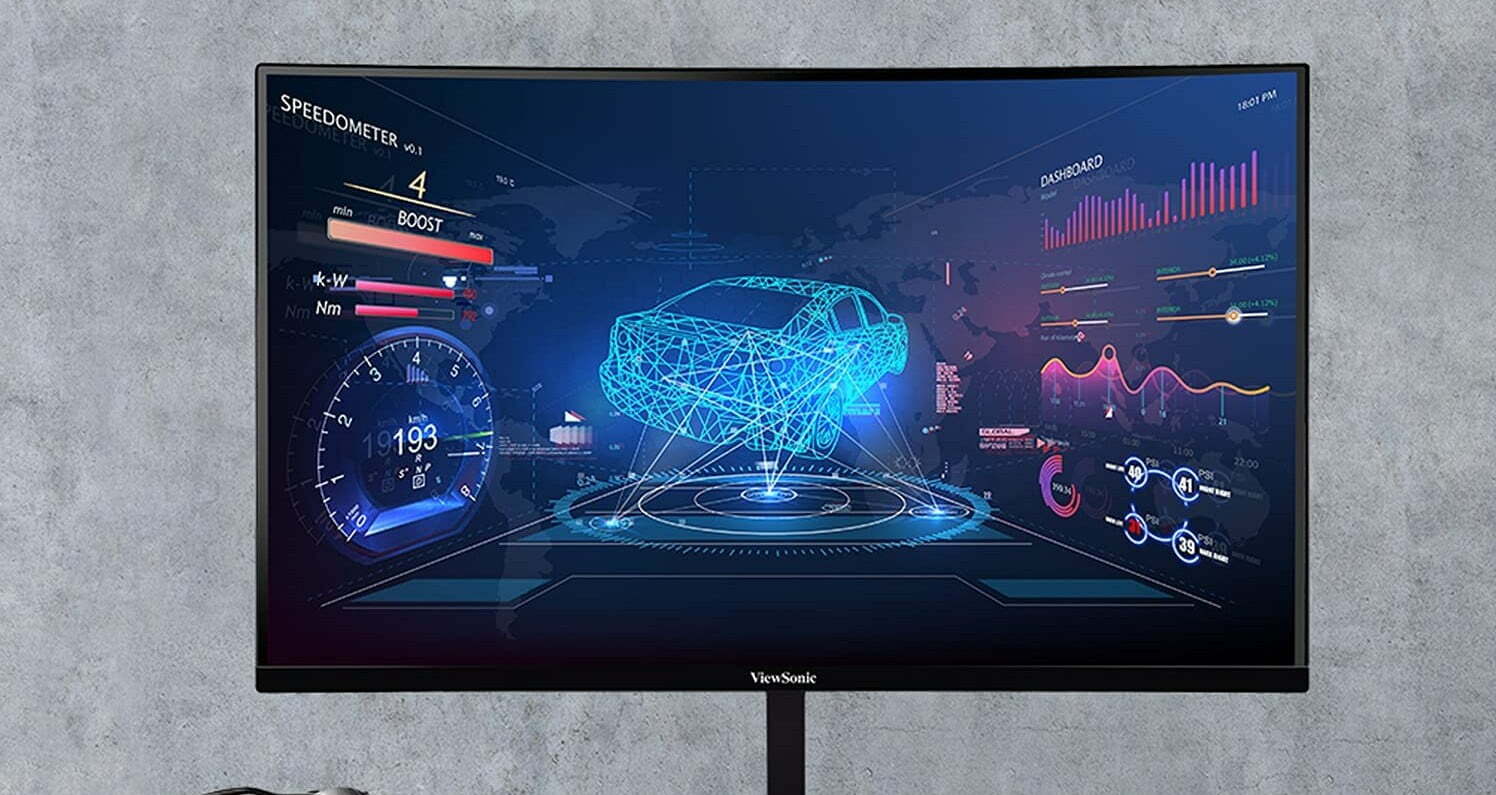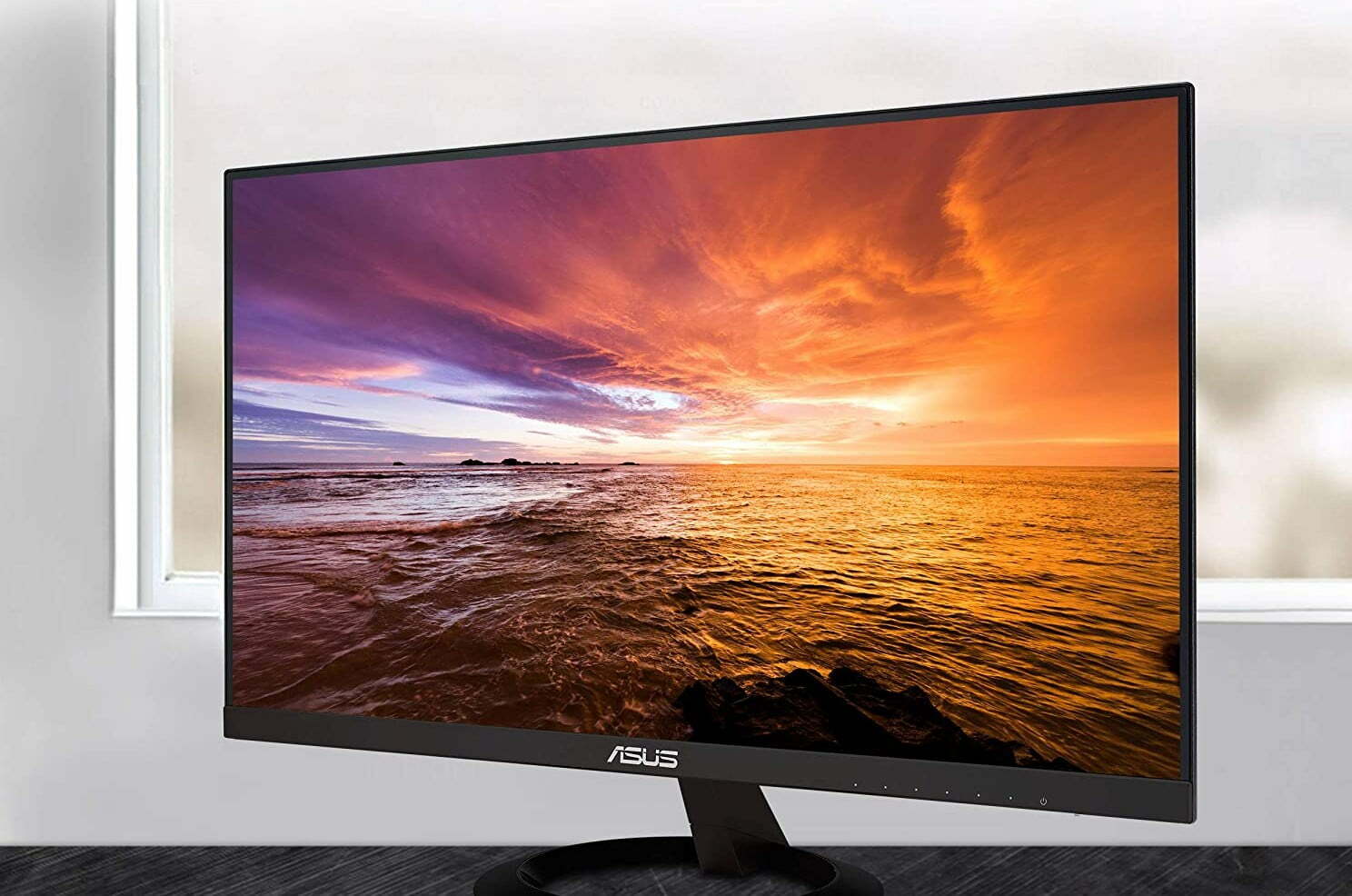Key Takeaways:
- Backlight bleeding commonly affects LCD display (Liquid Crystal Display) monitors with a VA(Vertical Alignment), IPS(In-Plane Switching), or TN(Twisted Nematic).
- Flash lighting or clouding happens due to panel warping when the screws are tightly fastened.
- Unlike your common backlight bleed or clouding, an IPS glow occurs in IPS monitors. An IPS glow manifests as a faint glow visible in certain angles.
Light leaking on your monitor edges is not only annoying but can also be distracting for gamers. Backlight bleeding is a monitor defect in modern monitors where the light source is shining through the screen edges. This defect is commonly caused when the backlight in a monitor is not completely sealed off due to poor quality control or manufacturer design issues.
Backlight bleeding commonly affects LCD display (liquid crystal display) monitors with a VA(Vertical Alignment), IPS(In-Plane Switching), or TN(Twisted Nematic). It’s not easy to spot a backlight bleed. A screen bleed is commonly visible in low light conditions, like using a monitor in a dark room.
Difficulty: Moderate
Time Required: 20 minutes
Total Steps: 6
Tools Needed: Screwdriver
Understanding Backlight Bleeding
Backlight bleeding is a display defect that commonly occurs in LCD screens that use a light source from a panel. This panel should ideally block excessive light that is not required when displaying a picture or video on the screen.
Sometimes, not all the light gets blocked by the panel, leaking out to the edges of the frame. This phenomenon is called backlight bleeding. Backlight bleeding can appear in the following ways:
Clouding
Clouding is when irregular patches of light are visible when on a full black screen. This kind of backlight bleed is common with larger monitors.
Flash Lighting
This backlight bleed is visible on the edges of the monitor. In severe instances, the edges of the monitor get more light, while the center is dimmer.
Related Posts:
Difference Between Backlight Bleed and IPS Glow
Unlike your common backlight bleed or clouding, an IPS glow occurs in IPS monitors. An IPS glow manifests as a faint glow visible in certain angles, especially when watching dark content. Depending on the type of panel, the IPS glow is unavoidable but tolerable. The glow is visible in corners.
How to Test for Backlight Bleed
If you are unsure if you have a backlight bleed or IPS glow, you’ll need to perform a backlight bleed test. Fortunately, it’s a simple and straightforward process.
- First, ensure your monitor is in a dark room. Turn off the lights. A black monitor and darkroom make it easy to spot an IPS glow or backlight bleed.
- Adjust your monitor brightness to desired levels. It’s recommended to have it between 30% to 50%. Don’t set the brightness to full.
- Set up a black screen or open a black image and inspect where patches of light are visible around the edges or corners of the monitor. If you cannot spot any IPS glow or backlight bleeding issue, your monitor is fine.
Related Posts:
How to Fix a Backlight Bleed on a Monitor
Before you perform this task, make sure your monitor is turned off. Give it a few minutes to cool off.
- Loosen screws located at the back of your monitors slightly. At times, flash lighting or clouding happens due to panel warping when the screws are tightly fastened. Turn the screws halfway, counterclockwise.
- Slightly twist your frame. Turn on your monitor to check if the backlight bleed is still visible.
- If the backlight bleed is still visible, take a microfiber cloth, and in a circular motion, rub the areas where the bleed appears. Make sure you only apply as much pressure to see reflections on the screen warp slightly.
If you perform all the steps above and the backlight bleed persists, let your monitor sit for a day. If the bleed is still visible, repeat the above steps. The bleed should eventually fade away.
Warning: Before you perform this task, make sure your monitor is turned off. Give it a few minutes to cool off
STAT:
Revenue on PC monitors segments amounts to about $3M in 2021. The PC monitor market is expected to grow annually by 0.73%. Globally, most of the revenue is generated in China (Source).
Sources:
*https://www.youtube.com/watch?v=JNi-dXokn78
https://www.dell.com/support/kbdoc/en-us/000132299/troubleshooting-light-leakage-bleeding-on-a-lcd-monitor-or-notebook-lcd-screen
https://3dinsider.com/backlight-bleed-monitors/
https://www.pchardwarehelp.com/guides/backlight-bleeding.php
https://en.wikipedia.org/wiki/Backlight




































![Best 27 Inch Computer Monitor in [year] 27 Best 27 Inch Computer Monitor in 2025](https://www.gadgetreview.dev/wp-content/uploads/how-to-buy-the-best-computer-monitor.jpg)
![Best BenQ Monitors in [year] 28 Best BenQ Monitors in 2025](https://www.gadgetreview.dev/wp-content/uploads/best-benq-monitor-image.jpg)
![Best ASUS Monitors in [year] 29 Best ASUS Monitors in 2025](https://www.gadgetreview.dev/wp-content/uploads/best-asus-monitor-image.jpg)
![Best Dell Monitors in [year] 30 Best Dell Monitors in 2025](https://www.gadgetreview.dev/wp-content/uploads/best-dell-monitor-image.jpg)
![Best HP Monitors in [year] 31 Best HP Monitors in 2025](https://www.gadgetreview.dev/wp-content/uploads/best-hp-monitor-image.jpg)
![Best Lenovo Monitors in [year] 32 Best Lenovo Monitors in 2025](https://www.gadgetreview.dev/wp-content/uploads/best-lenovo-monitor-image.jpg)
![Best ViewSonic Monitors in [year] 33 Best ViewSonic Monitors in 2025](https://www.gadgetreview.dev/wp-content/uploads/best-viewsonic-monitor-image.jpg)
![Best Gigabyte Monitors in [year] 34 Best Gigabyte Monitors in 2025](https://www.gadgetreview.dev/wp-content/uploads/best-gigabyte-monitor-image.jpg)
![Best Monitors for PS4 Pro Gaming in [year] 35 Best Monitors for PS4 Pro Gaming in 2025](https://www.gadgetreview.dev/wp-content/uploads/best-monitors-for-ps4-pro-image.jpg)
![Best Monitor for Xbox Series X in [year] 36 Best Monitor for Xbox Series X in 2025](https://www.gadgetreview.dev/wp-content/uploads/best-monitor-for-xbox-series-x-image.jpg)
![Best Acer Monitors in [year] 37 Best Acer Monitors in 2025](https://www.gadgetreview.dev/wp-content/uploads/best-acer-monitor-image.jpg)
![Best MSI Monitors in [year] 38 Best MSI Monitors in 2025](https://www.gadgetreview.dev/wp-content/uploads/best-msi-monitor-image.jpg)
![Best SAMSUNG Monitors in [year] 39 Best SAMSUNG Monitors in 2025](https://www.gadgetreview.dev/wp-content/uploads/best-samsung-monitor-image.jpg)
![Best LG Monitors in [year] 40 Best LG Monitors in 2025](https://www.gadgetreview.dev/wp-content/uploads/best-lg-monitor-image.jpg)
![Best AOC Monitors in [year] 41 Best AOC Monitors in 2025](https://www.gadgetreview.dev/wp-content/uploads/best-aoc-monitor-image.jpg)
![Best Philips Monitors in [year] 42 Best Philips Monitors in 2025](https://www.gadgetreview.dev/wp-content/uploads/best-philips-monitors-image.jpg)
![Best Monitors For PUBG in [year] 43 Best Monitors For PUBG in 2025](https://www.gadgetreview.dev/wp-content/uploads/best-monitor-for-pubg-image.jpg)
![Best Stream Decks in [year] 44 Best Stream Decks in 2025](https://www.gadgetreview.dev/wp-content/uploads/best-stream-deck-image.jpg)
![Best Monitors for Streaming in [year] 45 Best Monitors for Streaming in 2025](https://www.gadgetreview.dev/wp-content/uploads/best-monitor-for-streaming-image.jpg)
![Best Monitors For Flight Simulator in [year] 46 Best Monitors For Flight Simulator in 2025](https://www.gadgetreview.dev/wp-content/uploads/best-monitor-for-flight-simulator-image.jpg)




















